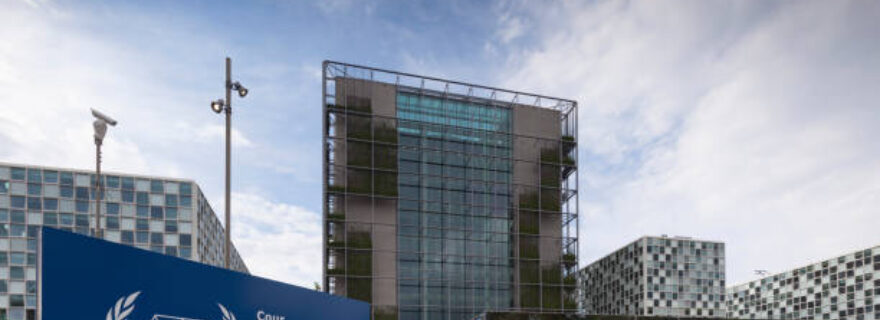ICC investigations in Ukraine: How Digitally Derived Evidence can make a difference
Digitally Derived Evidence will likely make a great difference in the Office of the Prosecutor’s investigation in Ukraine. The Leiden Guidelines on DDE can help.
As the armed conflict in Ukraine progresses, something has become clear: the proliferation of wartime information on social media means this conflict is being actively watched by people around the globe daily. Soldiers, individuals that have taken up arms, civilians and members of the media have live-streamed the conflict, and uploaded videos, pictures, audio recordings, among many other forms of media on countless platforms. These platforms are now riddled with potential digitally derived evidence (DDE, encompassing both originally digital material as well as that which has been converted to digital form). The Office of the Prosecutor (OTP) might have to rely on them for confirmation, in the case it wishes to present to Pre-Trial Chamber II.
Following Russia’s initiation of its invasion of Ukraine, the International Criminal Court’s (ICC) Prosecutor Khan announced
on the 2 March that referrals by 39 State Parties, ‘enable my Office to proceed with opening an investigation into the Situation in Ukraine … encompassing within its scope any past and present allegations of war crimes, crimes against humanity or genocide committed on any part of the territory of Ukraine by any person’. He finalised by stating that the investigation was already underway.
Today, there are a number of resources offering guidance on the effective collection and preservation of potential digital evidence, including the ‘Berkeley Protocol on Digital Open Source Investigations’. A novel tool to complementarily support the collection of digital evidence is the ‘Leiden Guidelines on the Use of Digitally Derived Evidence in International Criminal Courts and Tribunals’ (the Leiden Guidelines). The Leiden Guidelines are the culmination of the Kalshoven-Gieskes Forum’s DDE Project through Leiden International Humanitarian Law Clinic to examine ‘the different legal standards of evidence applicable at various national and international accountability fora in order to prosecute international crimes’. The Leiden Guidelines provide ‘elements which should be considered before submitting DDE to an international criminal court or tribunal’. Focusing on the three admissibility elements of evidence established by the Rome Statute (relevance, probative value, and prejudicial effect), the Guidelines analyse six types of DDE: videos, photographs, aerial and satellite images, intercepts, call data records, and audio recordings.
Typical issues addressed under each category of DDE are the authentication, verification and reliability of the evidence, and linking the evidence to individual perpetrators. The relevance of applying the Leiden Guidelines when gathering DDE in the context of the Russo-Ukrainian armed conflict can be demonstrated through several examples. The first regards a satellite image of Mariupol, which shows that the Russian word for ‘children’ had been written on each side of the theater. The building was then repeatedly bombed by the Russian armed forces. According to the Leiden Guidelines, ‘aerial and satellite images can be used to corroborate other evidence’. As such, this image of Mariupol could be used to verify evidence such as ‘forensic evidence, witness testimony, and the reliability of intercept communications’. It could be admitted as evidence to show knowledge of the presence of civilians, the violation of the international humanitarian law’s (IHL) principle of distinction and even the commission of serious IHL violations.
A more recent example on aerial and satellite images regards the killings of civilians by Russian forces in Bucha. Satellite images of bodies on the streets of Bucha dated 19 and 21 March may be used to prove that Russia’s statements (claiming that bodies in civilian clothing had appeared there after Russian forces retreated from the town) were incorrect. This may serve as further evidence of serious violations of IHL in Ukraine. Also, with corroboration from witness and/or experts, this evidence should be considered reliable and authentic and given weight.
Another example regards intercepted communications of Russian soldiers acquired by Germany’s foreign intelligence service. Russian soldiers can be heard saying they will carry out indiscriminate killings in Ukraine. The Leiden Guidelines state that submission of the intercepts’ original audio would enhance the probative value of the intercept evidence, but is not necessary ‘when enough evidence surrounding the intercepts already exists’. When the original audio is unavailable, the absence of the original audio can be ameliorated. The Guidelines’ commentary cite the ICTY case Blagojević and Jokić, wherein the Trial Chamber dismissed the Defence’s argument claiming “the Prosecutor should have submitted the original audio recordings [...] in order to prove the reliability and authenticity of the intercepts”. The Chamber found that the large amount of documentary evidence and corroborative testimony accompanying the intercept evidence rendered the intercepts’ original audio unnecessary.
A significant portion of DDE emerging from the ongoing armed conflict will fall within the six categories covered by the Leiden Guidelines. The above examples employing these novel Guidelines offer initial insight into how the OTP can rely on standards of treatment of DDE, utilised in prior cases at international criminal courts and tribunals, when dealing with said evidence during its investigation. As such, the Leiden Guidelines may be of benefit to the OTP when preparing and reviewing the DDE they wish to present to Pre-Trial Chamber II.




0 Comments
Add a comment